
Back to selection

Supplier
Iridium Communications
Iridium Communications, Inc.
1750 Tysons Boulevard
Suite 1400
McLean, VA 22102
USA
Iridium Communications, Inc. is operating the Iridium satellite constellation, a system of 66 active and spare satellites in Low Earth Orbit (LEO) used for worldwide voice and data communication from hand-held satellite phones and other transceiver units.
Iridium Communications, Inc. was formerly known as Iridium Satellite LLC and is a public company trading on the NASDAQ and headquartered in McLean, Virginia USA. It was created in 2009 after the merge with a Special Purpose Acquisition Company (SPAC), conducted by the investment bank Greenhill & Co.
The company manages several operations centers, including Tempe in Arizona and Leesburg in Virginia, USA. The Iridium system is being used by the U.S. Department of Defense.
The Iridium satellites are in six polar orbital planes at an altitude of 780km (485 miles) communicating with neighboring satellites via Ka-band inter-satellite links to relay communications to and from ground stations.
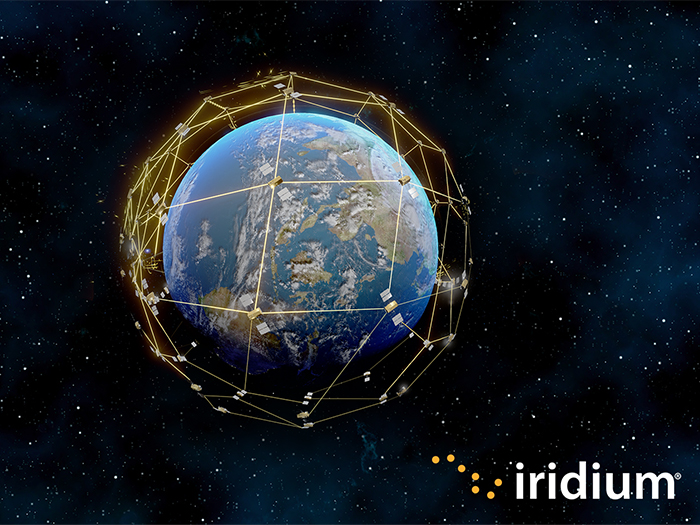
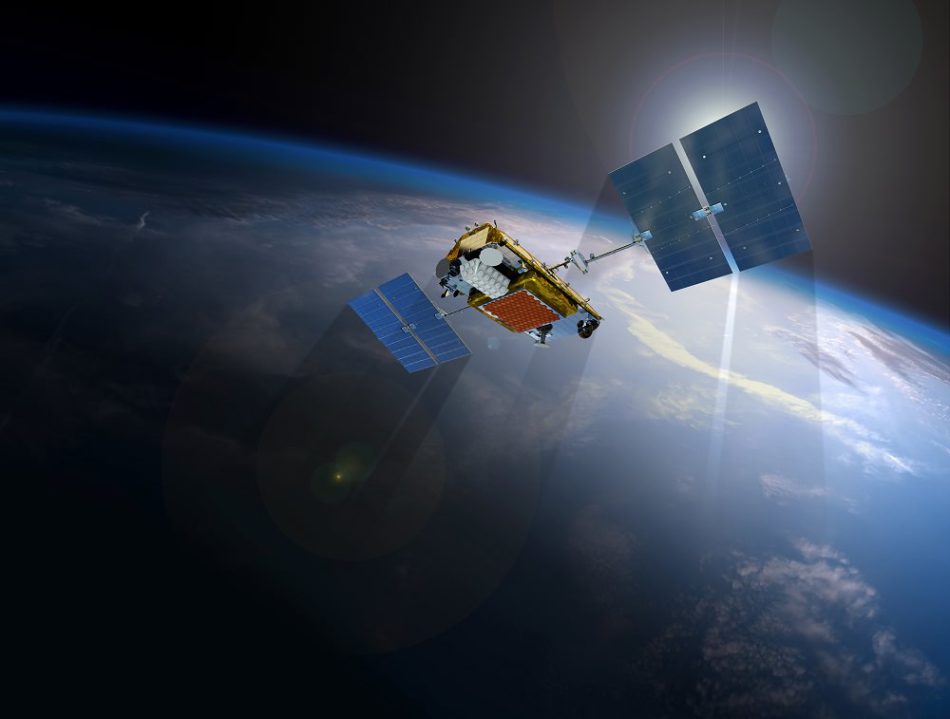

Iridium started as one of the most ambitious telecommunications projects with mobile phone company Motorola, later to become a subsidiary of the company. The original system went live on November 1st, 1998 after successful tests. The first Iridium call was made by Vice President of the United States Al Gore to Gilbert Grosvenor, the great-grandson of Alexander Graham Bell. The company derives its name from the chemical element iridium, which has an atomic number of 77, equaling the initial number of satellites which were planned to be deployed.
Besides Motorola, Iridium’s investors are China Great Wall Industry Corp. (CGWIC), Russia’s Khrunichev State Research and Production Space Center, Korea Mobile Telecommunications, Lockheed Martin, Nippon Iridium, Corp. of Japan, Raytheon and Sprint from USA, Societa Finanziaria Telefonica per Azioni from Italy, Pacific Electric Wire & Cable based in Taiwan, Thai Satellite Telecommunications, Vebacom Germany and a number of regional consortiums.
In August 1999 the founding company filed voluntary for Chapter 11 bankruptcy protection, as it said the company was ‘failing to get enough subscribers to use its satellite network’. The spin-off of Iridium represented a significant business risk for Motorola. This bold technology gamble suffered from numerous marketing missteps, which led to Iridium’s bankruptcy. It turned out that the handsets could not operate as promoted until the entire constellation of satellites was in place, requiring a massive initial capital cost of billions of dollars.
Since emerging from Chapter 11 on March 30th, 2001, the company restructured its business model, focusing on niche data and voice applications and built a profitable, growing company.
Iridium is also a founding member of the Hosted Payload Alliance (HPA), a satellite industry alliance program with satellite operators, satellite manufacturers, system integrators and other interested parties as active members. The Alliance was formed in 2011.
Company History
In 1987 three engineers from the Motorola Strategic Electronics Division, Bary Bertiger, Ken Peterson and Ray Leopold outlined the first global satellite communications network of the world– Iridium. The original one-page document now sits in the Smithsonian National Air and Space Museum in Washington D.C.
The Iridium concept envisioned a satellite-based telephone system that would provide worldwide coverage using one handheld portable device. This became what was ultimately known as the Iridium System.
With its inception, the Iridium constellation was planned for 77 satellites to provide truly global coverage to the planet. In 1992, the plan was redesigned to include just 66 satellites after engineers discovered they could do the job. Although the company was named for the 77th element on the periodic table, the name Iridium stuck with the final system.
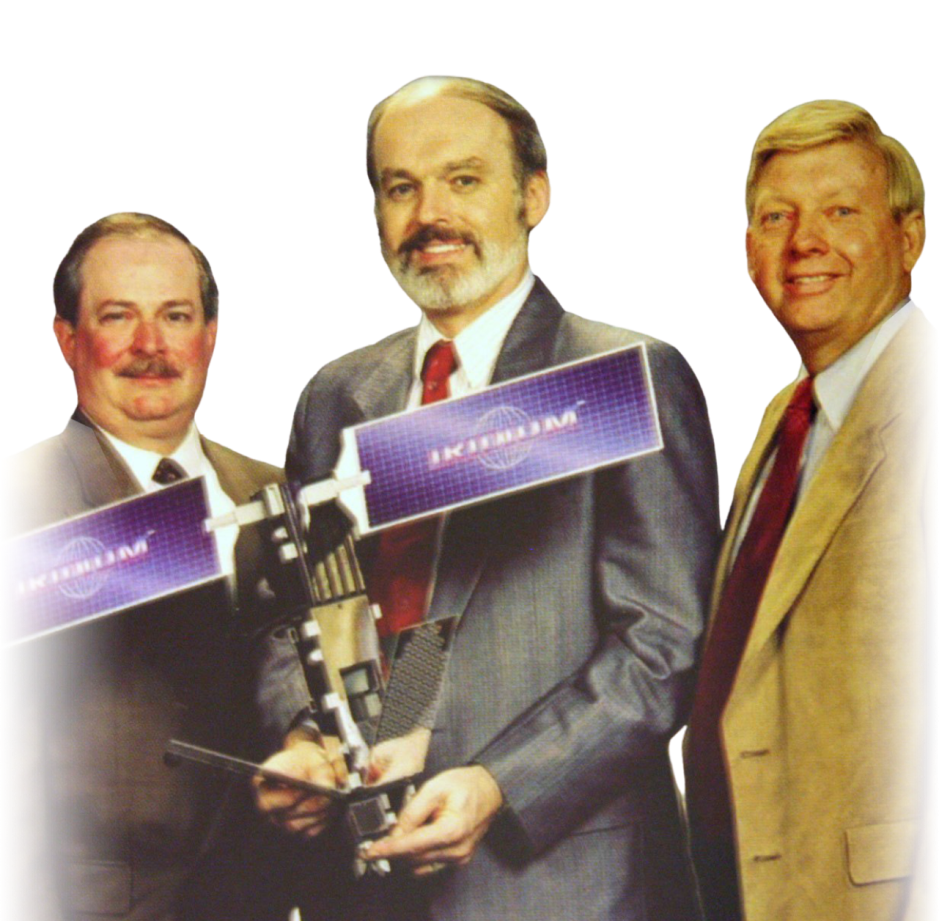
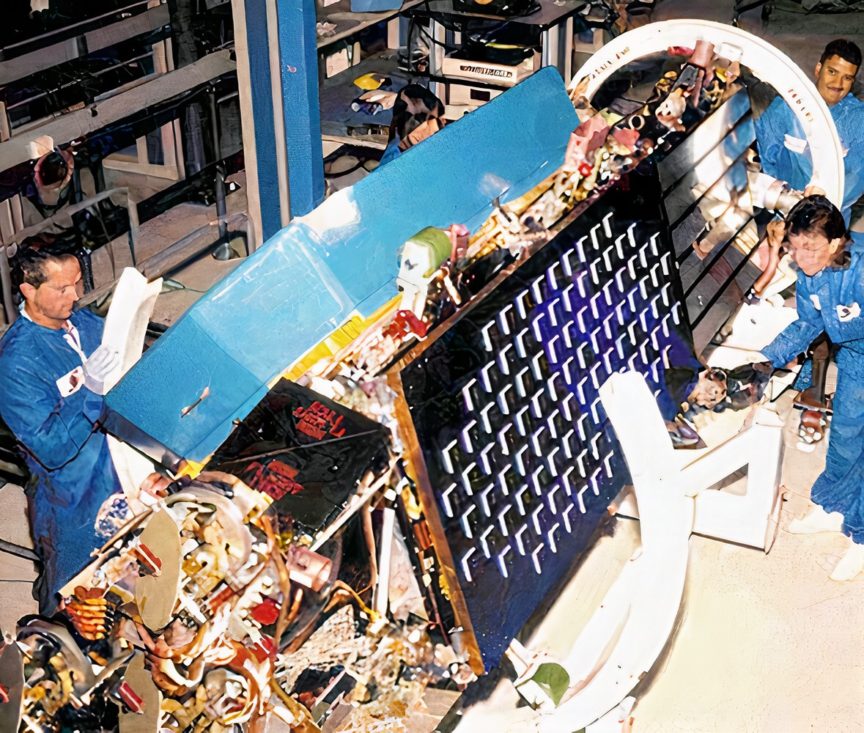
On June 14th, 1991 Motorola established Iridium, Inc. as a separate entity from Motorola SatCom to develop and deploy the satellite network. Besides Motorola, which retained a 20.1% stake, other major partners included Germany’s Vebacom (10%), Korea Mobile Telecommunications (4.4%), Sprint Corporation (4.4%) and Italy’s STET (3.8%).
On August 26th, 1996 Iridium LLC, completed a 750 million USD credit agreement with a group of 62 banks. To date, Iridium has raised more than 2.65 billion USD from investors, to finance its satellite plans.
On August 14th, 1999, nine months after the launch of the organization, the founding company filed voluntary for Chapter 11 bankruptcy protection. Although the innovative products and reliable services were technically successful, they were positioned against but could not compete with the smaller, lower-cost cell phones that had overtaken the market during Iridium’s development phases.
The handsets could not operate as promoted until the entire constellation of satellites was in place, requiring a massive initial capital cost of billions of dollars. The cost of service dissuaded many potential users. Reception indoors was difficult and the hand-held devices, when compared to terrestrial cellular smart phones were bigger and more expensive, both of which discouraged adoption among potential users.
The creditors blamed Motorola for the failure of the Iridium satellite venture, which promised to deliver satellite telephony to subscribers worldwide. Two weeks later a second satellite company, ICO Global Communications, filed for bankruptcy protection.
In December 1999 a group of investors led by share-holder Motorola agreed to commit 20 million USD so that the company could continue operating through early next year.
On July 30th, 2000 Iridium Satellite LLC was formed with the intent to purchase the assets of Iridium LLC from bankruptcy. This company would restart the business to become the successful organization that still owns and operates the world’s only truly global satellite network today.
In August 2000, Motorola announced that the Iridium satellites would have to be deorbited, but the satellites remained in orbit and operational. Later, in December, the US government saved Iridium by providing 72 million USD in exchange for a 2-year contract and approving the fire-sale of the company from US bankruptcy court for 25 million USD in March 2001. This erased over 4 billion USD in debt.
On November 16th, 2000 the bankruptcy court approved the sale of Iridium LLC’s assets for approximately 25 million USD. As part of the initial cost-cutting efforts, Iridium Satellite LLC contracted Boeing to operate and maintain the satellite constellation, who did the job for 3.5 million USD per month, compared to Motorola, who was charging the company 45 million USD per month for the same services.
On December 5th, 2000 the company was awarded a 72 million USD contract by the U.S. Department of Defense (DoD) for 24 months of unlimited airtime for 20,000 government users on the Iridium Network. The contract, valued 252 million USD including options to expand to 2007, was set in place days before the planned deorbiting of the Iridium satellite constellation.
In February 2005 Iridium was one of the only communications system available to first responders in the weeks following Hurricane Katrina, bringing a 3,000% increase to Iridium usage in the region. This increase brought significant attention to Iridium and the value of satellite communications during and after natural disasters, something Iridium has continued to focus on through its Corporate Social Responsibility efforts.

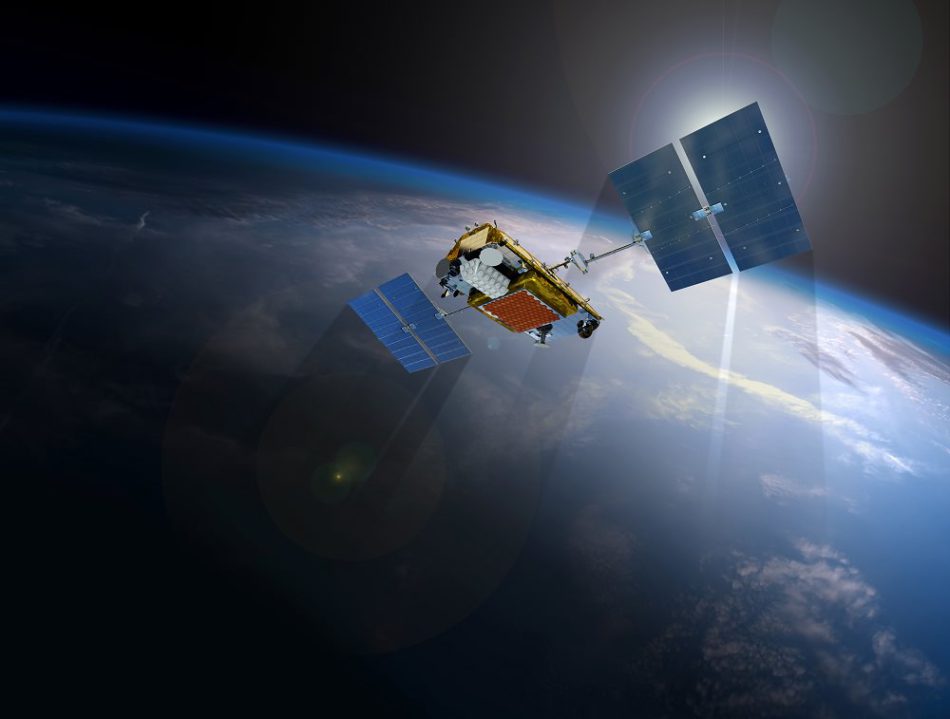
On February 19th, 2007 the company announced its comprehensive plan for funding, building and deploying its Iridium NEXT satellite constellation, to replace the original Iridium constellation. Satellite manufacturer Thales Alenia Space was contracted for the design and the construction of the planned 72 operational satellites and in-orbit spares, plus an additional nine ground spares, with the plan to commence the launch of the first satellites during Q1 2015.
On September 23rd, 2008 Iridium announced it would merge with GHL Acquisition Corp., a special purpose acquisition company (SPOC) created by the investment bank Greenhill & Co. to go public. One year later, Iridium began trading on the NASDAQ as IRDM. GHL acquired all of the equity in Iridium Holdings on September 29th, 2009 and changed its name to Iridium Communications, Inc., listed on the Nasdaq Stock Market under the symbol IRDM.
On February 11th, 2009, Iridium-33 satellite collided with the Russian Kosmos 2251 (Strela-2M #51) satellite. Both satellites were completely destroyed and produced a large number of debris objects in orbit.
On October 1st, 2010 Iridium agreed with Motorola, Inc. to resolve all disputed matters in the lawsuit filed by Motorola in February 2010. Motorola was demanding 24.7 million USD in cash from Iridium Satellite LLC and was threatening to deny Iridium access to Motorola-owned technology that is indispensable to Iridium as it designs a 2Gen constellation of LEO satellites. The long-fought battle could complicate Iridium’s ongoing attempts to raise funds for its 2.7 billion USD 2Gen satellite constellation, Iridium NEXT.
On October 4th, 2010 the company signed a 1.8 billion USD financial deal with nine banks to fund the company’s 2Gen satellite constellation, Iridium NEXT. The loan featured key guarantees from the French export-credit agency, Coface. The satellites would be constructed by satellite manufacturer Thales Alenia Space of France and Italy. Launch operator SpaceX was contracted to orbit the satellites.
As from January 2017, the company launched the Iridium NEXT satellites through a 3 billion USD launch campaign. The new satellites were orbited by SpaceX’ Falcon 9 launch vehicles from Vandenberg AFB Space in California over the course of eight launches between January 2017 and January 2019.
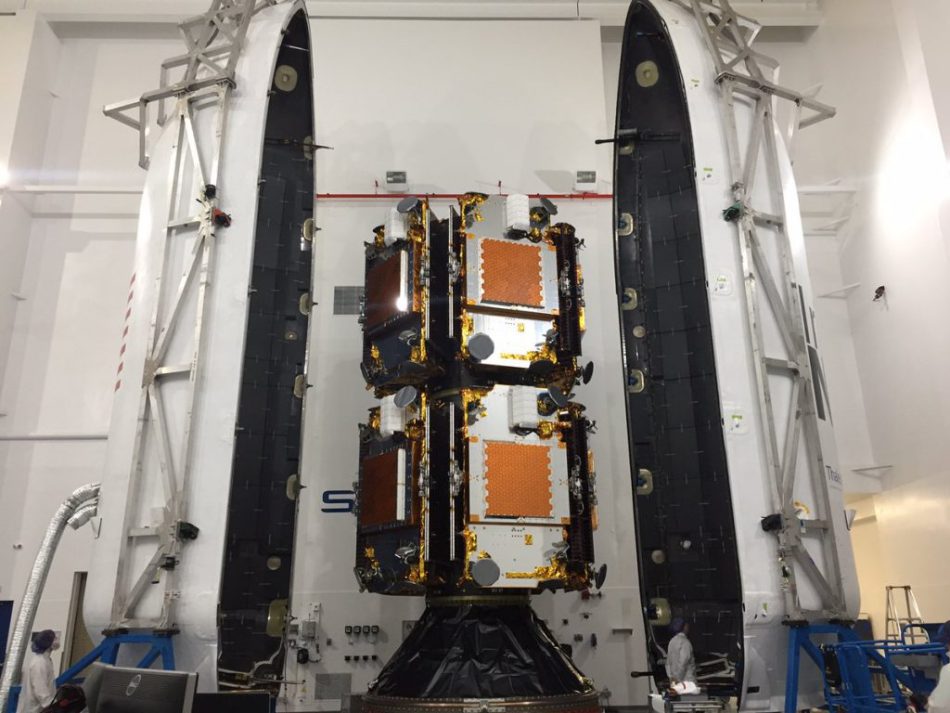
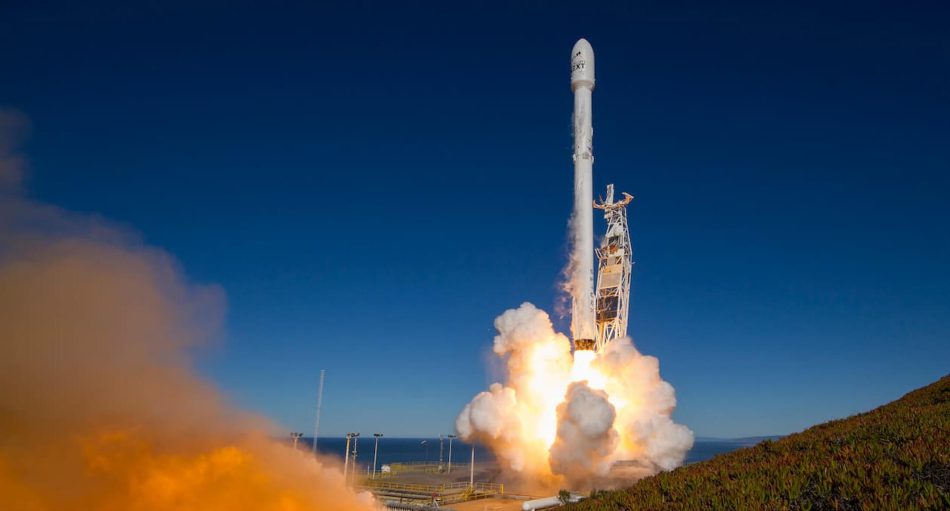
In March 2018 the company surpassed one million subscribers with a revenue of 523 million USD for the full year and is competing with Globalstar.
In February 2019 the company transferred all its communication services off of its two-decade-old legacy satellite fleet to the 2Gen Iridium NEXT satellite constellation. Iridium deorbited the legacy satellites thru the year.
On June 24th, 2020 Iridium signed a launch contract with satellite launch operator Relativity Space for deployment of individual ground spare satellites from the Iridium NEXT mission.
In December 2020, Iridium launched its Global Maritime Distress and Safety System (GMDSS) service, breaking a decades-long monopoly of satellite GMDSS services, an international SOS system for ships that provides life-saving assistance in maritime emergencies. The introduction of Iridium GMDSS brought the first truly global system for mariners, offering coverage even in polar regions where the service has never before been available.
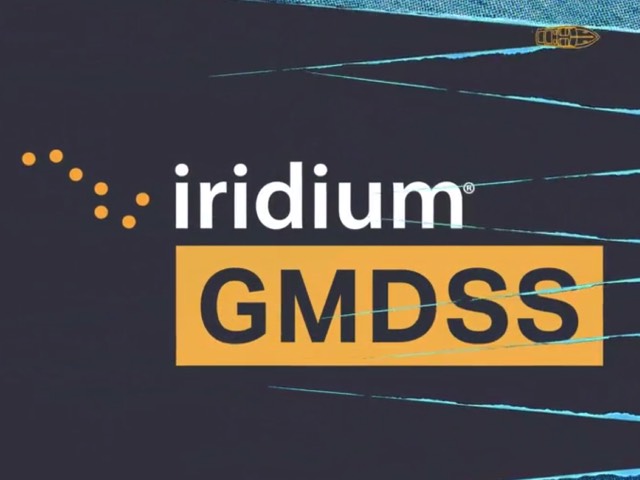

On June 24th, 2021 the company was awarded a 30 million USD R&D contract from the US Army to develop a payload to be hosted on small satellites that supports navigation systems, guidance and control for GPS and GPS-denied precision systems. The development of the new payload was based on Iridium Burst technology, a unique service that can transmit data to millions of enabled devices at a time from space.
On September 8th, 2022 Iridium Communications signed a launch contract with launch operator SpaceX for the Iridium-9 mission launching up to five ground spares for the Iridium NEXT program. The launch is scheduled for mid-2023 using SpaceX’ Falcon 9 rocket and will take place at Vandenberg Space Force Base in California, USA.
| #Satellites | Mission | Launch Date | Launcher | Launch Operator |
| Iridium-1,-2,-3,-4 | not launched | |||
| Iridium-5,-6,-7,-8 | MS-1 | May 5th, 1997 | Delta II | Boeing USA |
| Iridium-9,-10,-11,-12,-13,-14,-16 | Jun 18th, 1997 | Proton K | ILS Russia | |
| Iridium-15,-17,-18,-20,-21 | MS-2 | July 9th, 1997 | Delta II | Boeing USA |
| Iridium-22,-23,-24,-25,-26 | MS-3 | Aug 21st, 1997 | Delta II | Boeing USA |
| Iridium-27,-28,-29,-30,-31,-32,-33 | Sept 14th, 1997 | Proton K | ILS Russia | |
| Iridium-19,-34,-35,-36,-37 | MS-4 | Sept 27th, 1997 | Delta II | Boeing USA |
| Iridium-38,-39,-40,-41,-43 | MS-5 | Nov 9th, 1997 | Delta II | Boeing USA |
| Iridium-42,-44 | Iridium-42/44 | Dec 2nd, 1997 | LM CZ | CGWIC China |
| Iridium-45,-46,-47,-48,-49 | MS-6 | Dec 20th, 1997 | Delta II | Boeing USA |
| Iridium-50,-52,-53,-54,-56 | MS-7 | Feb 18th, 1998 | Delta II | Boeing USA |
| Iridium-51,-61 | Iridium-51/61 | Mar 25th, 1998 | LM CZ | CGWIC China |
| Iridium-55,-57,-58,-59,-60 | MS-8 | Mar 30th, 1998 | Delta II | Boeing USA |
| Iridium-62,-63,-64,-65,-66,-67,-68 | Apr 7th, 1998 | Proton K | ILS Russia | |
| Iridium-69,-71 | Iridium-69/71 | May 2nd, 1998 | LM CZ | CGWIC China |
| Iridium-70,-72,-73,-74,-75 | MS-9 | May 17th, 1998 | Delta II | Boeing USA |
| Iridium-76,-78 (Iridium-3) | Iridium-76/78 | Aug 19th, 1998 | LM CZ | CGWIC China |
| Iridium-77,-79,-80,-81,-82 | MS-10 | Sept 8th, 1998 | Delta II | Boeing USA |
| Iridium-83,-84,-85,-86,-87 (Iridium-2) | MS-11 | Nov 6th, 1998 | Delta II | Boeing USA |
| Iridium-88,-89 (Iridium-20A,-11A) | Iridium-88/89 | Dec 19th, 1998 | LM CZ | CGWIC China |
| Iridium-92,-93 (Iridium-14A,-21A) | Iridium-92/93 | Jun 11th, 1999 | LM CZ | CGWIC China |
| Iridium-90,-91,-94,-95,-96 | Iridium IS-1 | Feb 11th, 2002 | Delta II | Boeing USA |
| Iridium-97,-98 | Jun 20th, 2002 | Rokot KM | Eurockot Russia | |
| Iridium NEXT constellation: | ||||
| Iridium-1 (10x) | Iridium-1 | Jan 14th, 2017 | Falcon 9 | SpaceX USA |
| Iridium-2 (10x) | Iridium-2 | Jun 25th, 2017 | Falcon 9 | SpaceX USA |
| Iridium-3 (10x) | iridium-3 | Oct 9th, 2017 | Falcon 9 | SpaceX USA |
| Iridium-4 (10x) | Iridium-4 | Dec 22nd, 2017 | Falcon 9 | SpaceX USA |
| Iridium-5 (10x) | Iridium-5 | Mar 30th, 2018 | Falcon 9 | SpaceX USA |
| Iridium-6 (5x) | Iridium-6/GRACE-FO | May 22nd, 2018 | Falcon 9 | SpaceX USA |
| Iridium-7 (10x) | Iridium-7 | July 25th, 2018 | Falcon 9 | SpaceX USA |
| Iridium-8 (10x) | Iridium-8 | Jan 11th, 2019 | Falcon 9 | SpaceX USA |
| Iridium-9 (5x) | 2023 | Falcon 9 | SpaceX USA | |
All trademarks, logos and images mentioned and showed on this page are property of their respective owners.
Resources
www.iridium.com
www.motorola.com
www.investor.iridium.com
www.iridiummuseum.com
www.fcc.gov
www.techmonitor.ai edition June 26th, 1990
www.wsj.com edition August 26th, 1996
www.wirelessdesignonline.com edition October 30th, 1998
www.space.skyrocket.de
www.latimes.com edition August 14th, 1999
www.nytimes.com edition August 28th, 1999
www.smithsonianmag.com article: The Rise and Fall and Rise of Iridium by Craig Mellow, September 2004
www.barrons.com edition February 22nd, 2008
www.fiercewireless.com
www.spacenews.com edition February 17th, 2010
www.emerald.com edition January 20th, 2017
www.spacenews.com edition February 6th, 2019
www.satellitetoday.com edition September 8th, 2022